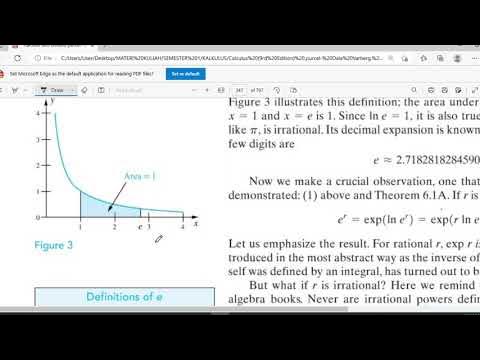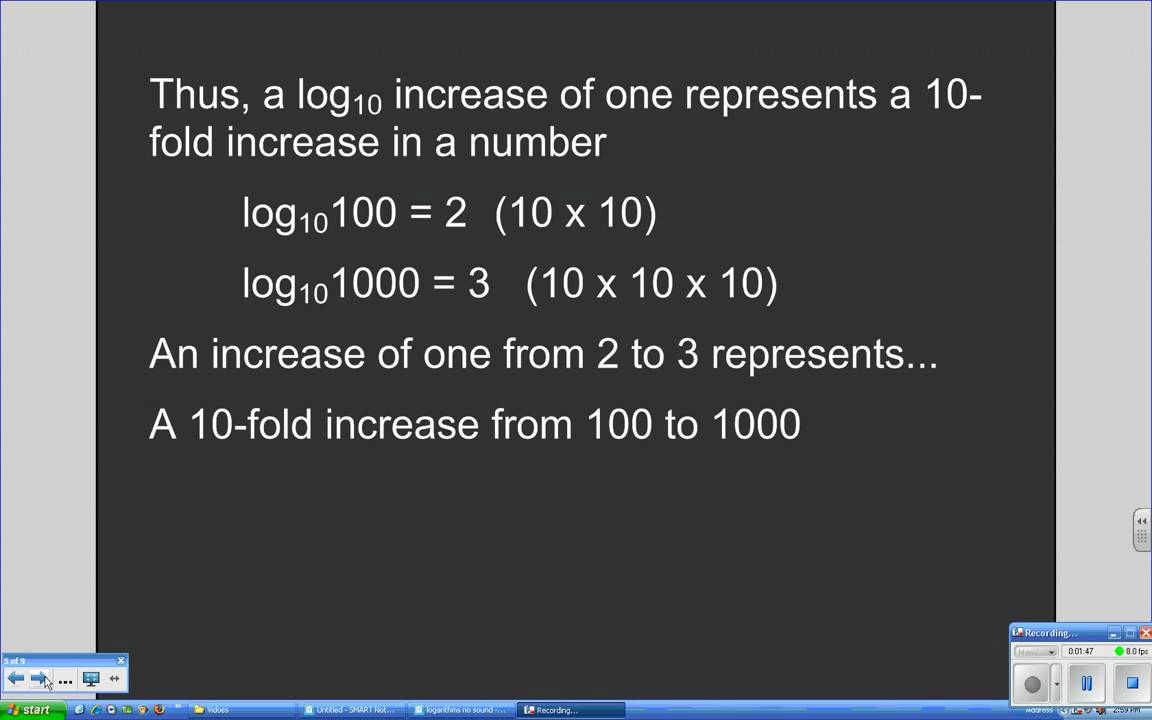Fungsi Transenden 1 (Logaritma Natural/Ln)
Summary
TLDRThis video explains the concept of natural logarithms and their relation to integrals. It discusses various mathematical principles such as integration of powers of x, the definition of the natural logarithm (ln), and the process of finding derivatives and integrals involving ln. The video also covers how logarithmic properties relate to geometry, the rules for differentiating logarithmic functions, and examples such as the derivative of a quadratic expression. In addition, it demonstrates applying these concepts to more complex functions, showcasing the versatility of logarithmic functions in calculus.
Takeaways
- 😀 The natural logarithm (ln) is defined as the integral of 1/t from 1 to x, and is the inverse of the exponential function.
- 😀 The derivative of ln(x) is 1/x, which is fundamental to its application in calculus.
- 😀 To compute the derivative of a function involving ln(x), the chain rule is used, such as for the derivative of ln(x^2 + 3x + 7).
- 😀 Integrating 1/x results in ln|x| + C, where C is the constant of integration.
- 😀 The natural logarithm can be used to represent the area under the curve y = 1/x from 1 to x.
- 😀 For negative values of x, the natural logarithm function is written as ln|x| to ensure the argument remains positive.
- 😀 The properties of natural logarithms are similar to those of regular logarithms, including ln(1) = 0 and ln(xy) = ln(x) + ln(y).
- 😀 When solving integrals involving rational functions, natural logarithms can often simplify the result, as seen in examples like ∫ x/(x² + 5) dx.
- 😀 A trigonometric integral such as ∫ tan(x) dx can be simplified using the identity tan(x) = sin(x)/cos(x), which leads to a logarithmic result.
- 😀 The chain rule helps simplify the differentiation process for more complex expressions like ln(1 - x²) and ln(x + 1)^(2/3), turning them into simpler forms for easier calculation.
Q & A
What is the main topic of the script?
-The main topic of the script is the explanation of the natural logarithm function, its relationship with integrals, and the process of finding derivatives and integrals involving logarithms.
What is the definition of the natural logarithm (ln)?
-The natural logarithm, denoted as ln(x), is defined as the integral of 1/t from 1 to x, or mathematically, ln(x) = ∫(1/t) dt from 1 to x for x > 0.
How do you compute the integral of x^n?
-The integral of x^n with respect to x is given by (x^(n+1))/(n+1) + C, where n ≠ -1. For n = -1, the integral of 1/x is ln|x| + C.
What is the result of the integral of 1/x?
-The integral of 1/x with respect to x is ln|x| + C.
How is the derivative of ln(x) related to 1/x?
-The derivative of ln(x) with respect to x is 1/x for x > 0.
What happens when you differentiate ln|x|?
-When you differentiate ln|x|, the result is 1/x, due to the chain rule applied to the absolute value of x.
How do you differentiate the function ln(x^2 + 3x + 7)?
-To differentiate ln(x^2 + 3x + 7), apply the chain rule. The derivative is 1/(x^2 + 3x + 7) multiplied by the derivative of (x^2 + 3x + 7), which is 2x + 3. Thus, the derivative is (2x + 3)/(x^2 + 3x + 7).
What is the integral of tan(x)?
-The integral of tan(x) with respect to x is ln|sec(x)| + C, which can be derived by using a substitution method involving the trigonometric identity tan(x) = sin(x)/cos(x).
How can natural logarithms be used to differentiate complex functions?
-Natural logarithms can simplify the differentiation of complex functions by applying logarithmic properties. For example, using ln on both sides of an equation can make differentiation easier by turning products into sums and powers into products.
What is the relationship between the natural logarithm and the exponential function?
-The natural logarithm (ln) is the inverse of the exponential function with base e. This means that ln(e^x) = x, and e^(ln(x)) = x, for x > 0.
Outlines

This section is available to paid users only. Please upgrade to access this part.
Upgrade NowMindmap

This section is available to paid users only. Please upgrade to access this part.
Upgrade NowKeywords

This section is available to paid users only. Please upgrade to access this part.
Upgrade NowHighlights

This section is available to paid users only. Please upgrade to access this part.
Upgrade NowTranscripts

This section is available to paid users only. Please upgrade to access this part.
Upgrade NowBrowse More Related Video

Fungsi Transenden 3 (Fungsi Eksponensial Natural)

Matematika Teknik I: 101 Fungsi Logaritma Natural - Definisi ln x dan turunannya

Definisi Logaritma dan Contoh soal

Logarithms and the pH scale

KALKULUS | FUNGSI TRANSENDEN | LOGARITMA ASLI (Turunan dan Integral)

Logaritmo: Introdução Parte 1 (Aula 1 de 14)
5.0 / 5 (0 votes)